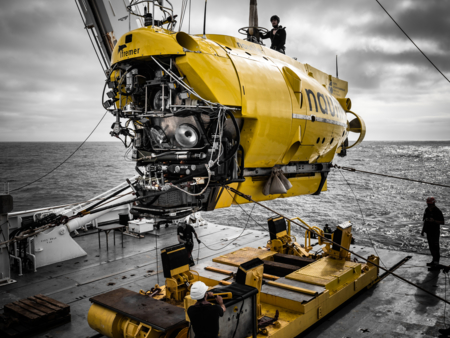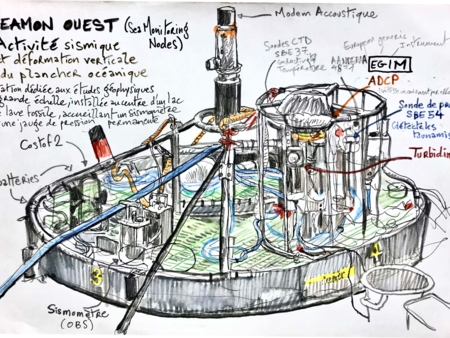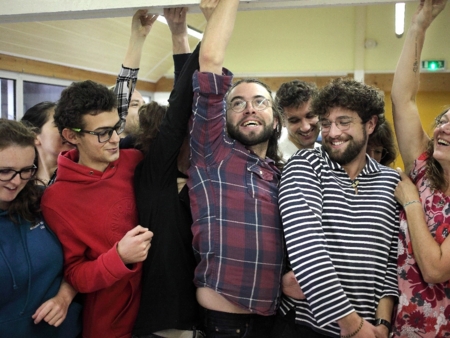Larval supply and colonisation processes on the Mid-Atlantic Ridge assessed with Deep-Seeds
Understanding how living communities develop and thrive at deep-sea hydrothermal vents remains a major gap in our understanding of the functioning of these ecosystems. Recruitment of new individuals is crucial for population replenishment and depends on the supply of larval stages coming from reproductively active populations occurring locally or afar. Dispersal of larvae and their ability to settle on the bottom are key steps in colonisation processes and community resilience, both being central issues for the development of environmental impact mitigation strategies in the context of deep-sea mining.
The primary target of mining are the so-called “inactive vent areas”, and vent research focus has recently broadened to include an increasing number of observations at inactive vent areas. Several studies already pointed at the ecological and functional links between active areas and their inactive peripheries, blurring such dichotomy. Here, we are looking into colonisation processes, considering both active sites and a range of hydrothermal areas lacking high temperature fluid emissions. In order to evaluate the relative contribution of far reaching mechanisms such as larval supply and local drivers (i.e. environmental filters) acting at settlement in different types of vent habitats, we developed small experimental modules, called Deep-Seeds. We deployed several of them in August 2022 along a hydrothermal activity gradient during the Hermine 2 cruise on board the N/O Pourquoi pas?
The Hermine 2 cruise explored the French licence area, located between 21°N and 26°N along the Mid-Atlantic Ridge. Research objectives included a specific focus on a series of active and inactive hydrothermal mounds in the vicinity of TAG Active mound (Fig 1A). Besides different observations conducted with HOV Nautile on the geology, mineralogy, fluid activity, microbial activity, we deployed our standardized platform Deep-seeds to evaluate colonisation processes at 4 mounds with different age and hydrothermal activity levels. Deep-Seeds collect sinking particles and settling larvae within small tube traps while they also provide colonization surfaces (made of slates or oak) for recruitment of organisms (Fig 1B). At each deployment site, two Deep-seeds (one with slates and one with wood) were deployed along with a tilt current meter, as well as a supplementary colonisation modules made of 3 piled basalt plates (Fig 1C).
Five deployment sites were chosen to illustrate the gradient between active vent areas and old extinct vents (Fig 1C). At TAG, 2 experimental sets were installed at the base of the active mound, close to small smokers inhabited by shrimps, and on oxidized sulphide blocks colonized by vent anemones. Background temperature at each site was higher than ambient deep-sea temperature due to numerous diffusions emerging from base of the mound. Two other sets were deployed at hydrothermal mounds exhibiting discrete low temperature diffusions, namely Shimmering Mound and Abyss Mound, with background equal to the deep-sea ambient temperature. The last set was deployed on Shinkai Mound, an old and oxidized mound where no temperature anomaly was detected.
These colonisation experiments will be recovered in 2023, during the BICOSE 3 cruise. Organisms installed on substrata and larval stages captured in tube traps will be identified. Diversity and abundance of larval and settled communities will be compared between substratum types and sites. Current-meter will provide information on local hydrodynamics during the in-situ deployment, potentially giving hints on larval arrival. This experimental approach will allow us to better evaluate colonisation processes at inactive or low active sites, estimating the relative contribution of large scale (dispersal) vs local processes (environmental filters) in each type of habitats, and further assess the functional and biodiversity links between active and inactive sites.





